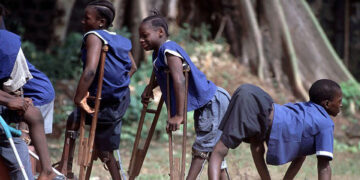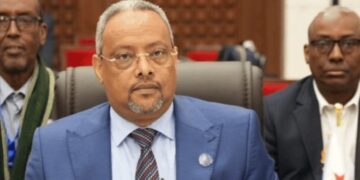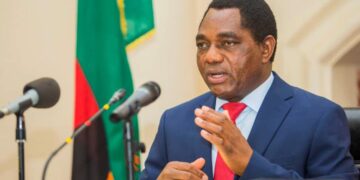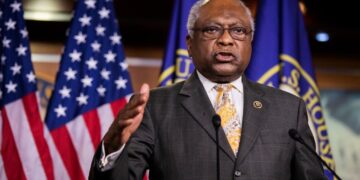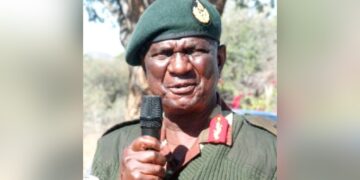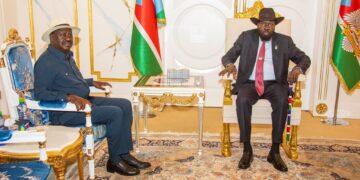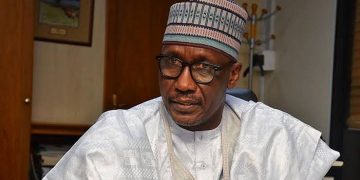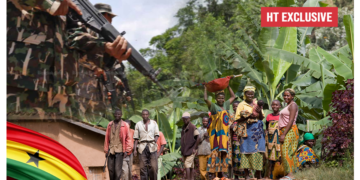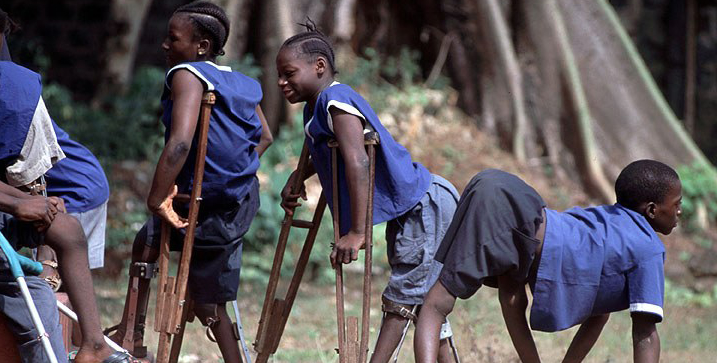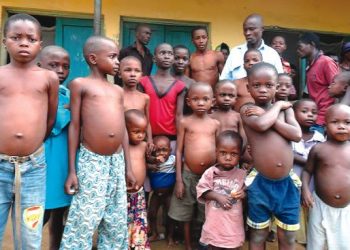By Abayomi Ogunsanya
In August this year, amid the uncertainties and tremendous global discomfort caused by the Covid-19 pandemic, Nigeria received an encouraging news when the country was declared free of the wild polio virus, joining a league of countries in which the virus had been eradicated and, by this declaration, inching Africa towards a total freedom from the disease.
It was a triumph for Nigeria and a personal victory for me as a polio survivor.
In commemoration of this year’s International Day of Persons with Disabilities, I deem it appropriate to reflect on this important victory and to offer a few personal account of my experience living with polio-inflicted disability and the challenges faced by polio and other survivors of sundry disabling illnesses.
Caused by polio enterovirus type 1, 2 or 3, polio is mainly a disease of children and young adults.
It is a virus of high infectivity whose main route of infection is through the human gastrointestinal tract. Infection is oral and the virus multiplies in the gut for three weeks, after which the person either recovers or becomes very ill.
Infection rates are normally very high but the vast majority of patients show no symptoms or appear as though they have a flu-like illness.
It was once a deeply feared disease in many parts of the world, and rightly so because it occurred in numerous epidemics.
It was one of the most rampant childhood illnesses when I was born in the 70s in northern part of Nigeria.
Incidence of the disease had ravaged Europe and America in previous decades until the inactivated polio vaccine (IPV) was developed by Jonas Salk in late 1955 and the oral polio vaccine (OPV) became available in 1962 following the work of Albert Sabin.
The widespread use of these vaccines led to the eradication of acute polio in the developed world and the disease had almost become a rarity in those countries by the time I was born.
Like many parents at the time of my birth, my parents did not know that I had contracted the disease; their initial thought was that I had suffered one of those perennial childhood illnesses and that it would soon pass.
But how mistaken they were! By the time an accurate diagnoses was made after a series of tests and following a premature injection of unrelated vaccines, I had succumbed irreversibly to one of the most damaging effects of the disease: one of my limbs had effectively paralysed and muscles in the other had weakened considerably. I was only sixteen months old and a toddler.
Many years later, when I came into a wider knowledge of the disease, I found that I was one of numerous children who had been paralysed at the time I contracted it. Some of those infected were, rather fortunately, not paralysed.
Many were partially paralysed and recovered, while others were paralysed partially or severely for life.
As I said above, the disease was endemic in the Northern region of Nigeria at the time I contracted it and for many years thereafter, it remained one of the most widespread childhood diseases in most parts of Nigeria. In the intervening years between the time that I contracted the disease and when I began to be conscious of my disability, many efforts were made by my parents to have me rehabilitated.
I grew up knowing only one form of mobility: crawling on all fours. But I was not aware of my disability until around the time I turned five years old when I realised that there were many things I could not do like my coevals, chief of which was that I could not walk like everyone else.
As part of many efforts to correct my disability, I was taken to National Orthopaedic Hospital, Dala, Kano where, after an initial assessment, a pair of calliper splints were recommended for me.
Back home, I could not cope with the discomfort of using the calliper splints and could not endure the pains I experienced while practising to walk with the aid of a walking frame.
I could never manage to stand unassisted and the distress of having some metal support for my legs was so much that I cried unceasingly until everybody soon gave up on trying to help me get used to this early attempt at rehabilitation.
It was inevitable that I would return to crawling around on all fours. To make this form of mobility easier for me and because my trousers were always torn at the knees, my mother bought a pair of rubber casing for my knees and a pair of slippers for my hands.
This was how I was until sixteen years later when I benefited from a corrective surgery that allowed me to return to the use of calliper splints and a pair of elbow crutches.
But the aftermath of polio does not end with corrective surgery or other forms of medical and psychosocial rehabilitation of victims.
New symptoms would follow much later. I did not know about this until after I’d turned 40 years old and I began to experience the condition known as ‘The Late Effects of Polio’ or ‘Post-Polio Syndrome.’
The symptoms of this condition, which include: • Pain in muscles and joints; • Lack of strength and endurance, with increased muscle weakness and fatigue; • Respiratory and swallowing difficulties, often with problems relating to sleep; • Severe intolerance of cold; and Decline in ability to carry out customary daily activities such as walking are not age related and some survivors, like me, may not experience all of these symptoms at once or there maybe delay in when they begin to set in.
I first became aware of this condition in 2018 when I moved to Ireland and I signed up to become a member of Polio Survivors Ireland, a charity that is committed to creating awareness and providing ‘information regarding the late effects of polio among polio survivors, statutory agencies and the wider medical profession,’ and to ensuring ‘that the needs of polio survivors relating to their condition are met to enable them to live with dignity.’
Since joining the organisation, I have received a great deal of support which make living with these symptoms a lot more bearable.
Post-Polio syndrome is internationally recognised and research is ongoing but awareness about it is still very limited, especially in developing countries.
While there is no known cure, organisations like Post-Polio Ireland advocate for a need to do more to alleviate the symptoms and enable the retention of an independent life, which may often require some modification of life style.
Paralysis (whether caused by polio or something else)–all disability—affects a person in many ways, including, as the eminent anthropologist Robert Murphy shows in ‘The Body Silent’, a person’s identity and his or her ties with others.
Polio could leave one’s body—or parts thereof—permanently altered, and if this happened when one was a child, working oneself through the labyrinth of dominant norms of daily life is a permanent lesson in negotiation with the physical environment as well as the human community to which one belongs.
In my experience as a polio survivor and a disabled person, I have had to combat sundry challenges, some in the form of finding my way around the physical environment and others in the shape of confronting social norms that frame disability as a negative social condition.
All of these experiences have contributed to shaping my understanding of how the world of people living with disabilities, in relation to its alterity— the world of the able—,functions.
For many disabled persons, perhaps more pernicious than the difficulties of dealing with many inhospitable aspects of the built environment—such as lack of access for wheelchair users etc. etc.
Is the challenges posed by the social construction of one’s disability and how this affects one’s relationship with others.
